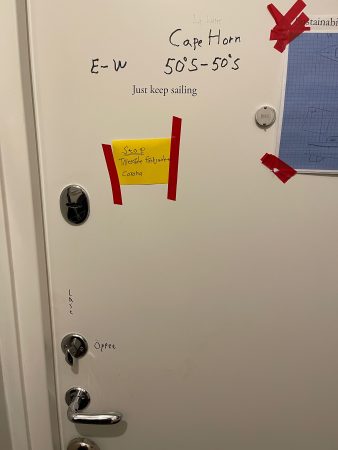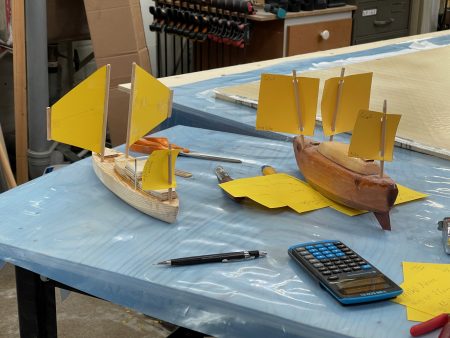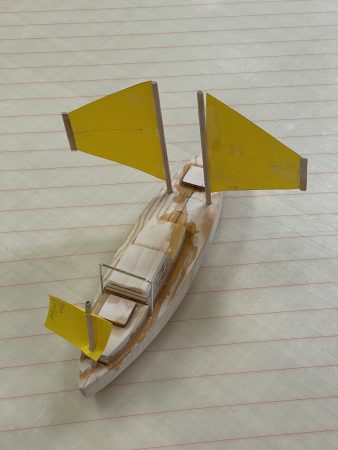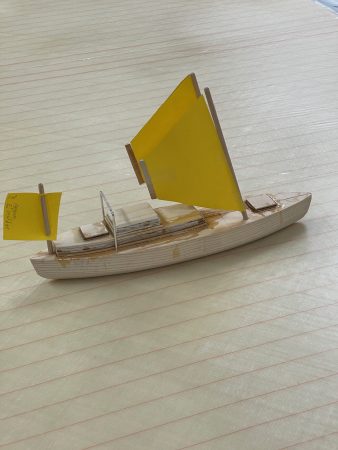A new year a new idea and a new route.
Often small small details have big consequences. Doing the mock up for the dining room I had put, below the seat twelve five liter plastic water cans as part of the water storage. My plan was to do a long sail to New Zealand. Madeira to Dunedin is about 14 000 miles. With an average estimated speed of 75 miles per day it would be about half a year.
There where refilling places on the route, but none really appealing.
To stop in Uruguay would add miles.
In South Africa, there was a lot of traffic it was stormy, there was also much crime I heard.
Australia demanded a visa. I had written to their embassy in Stockholm. You have to call Canberra came response and they have no e-mail. Sure they must have e-mail in Canberra. I realized that they tried to make it difficult for me and got angry.
With just nine cans I would have a bit more space I thought but no decision was made. I could have made the boat bigger but I like a handy boat. I waited for my inner voice to speak.
On my door, way back in time, I had written
Cape Horn East to west. Lat 50 S to 50 S as an interesting alternative.
On the night between 30 and 31 December 2021 I woke and started thinking. There is a lot of depressions passing Cape Horn. I thought if I could make reefing more easy and take advantage of the shifting winds I may stand a chance of reaching the Pacific that way.
Then I came to think of the Ljungström rig.
Navigateur Yann Quenet was using it on his Baluchon.
It has a free-standing mast that can rotate. By turning the mast on the boom-less rig the sail area is reduced in the same way as a furling jib.
It is a Swedish invention from 1933 by Fredrik Ljungström. You can still see some of the old boats around here in Sweden.
It works, but there is some problems with it. The sail is triangular, therefore the mast must be tall to give sufficient sail area and there is no boom to facilitate downwind sailing. The sheeting point is too low.
I got around these points in the following ways.
To increase the sail area I used a vertical club as the Chesapeake Bay racing log canoes. The vertical clubs I can make of composite to minimize their turbulence and make them light.
To overcome the problem with the sheeting point I will rake the mast aft 20 -25 degrees or so. That way I can sheet my two mainsails like foresails.
The rake also moves the center of effort aft. I like that because my side by side masts are forward of the fore bulkhead to not be in my bed and I like to have more weather helm. Rake is good for offshore work, as it gives a lifting force and keeps the boom from dipping in the water and possibly breaking when the boat rolls deeply.
This rig creates less forces on the masts as the lugsail hangs on the top of the mast therefore I can make it longer and more tapered.
The Ljungström mast can be rotated to get the sail always on the lee side. This will make the suction side more smooth reduce turbulence.
The chances of my succeeding in doubling Cape Horn is uncertain as I will have strong prevailing winds and currents against me, but that makes the undertaking interesting. Even if I do not succeed all is not lost as I can do as Captain Bligh did.
He had for a month unsuccessfully tried round Cape Horn in Bounty but was finally defeated by the stormy weather and opposite winds and forced to head east repair damage in Cape Town and then take the longer way to the pacific by sailing east by way of Australia.
If the canoe yawl Exlex proves to be fast and able, only then will I try the Cape Horn alternative. My hope is that she be a good boat.
Below photos



In conclusoin: I will try a new rig, more easy to reef, I will try Cape Horn. If I reach the Pacific via Cape Horn NZ will have to wait.
Plese support my project with donations.
To be continued…
Regards Yrvind.

